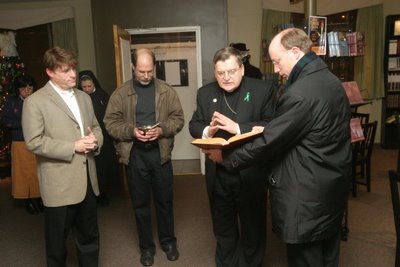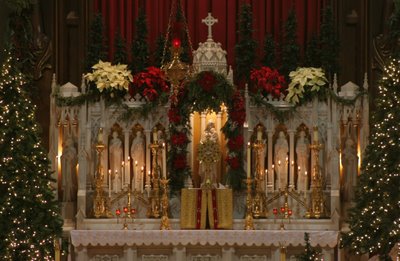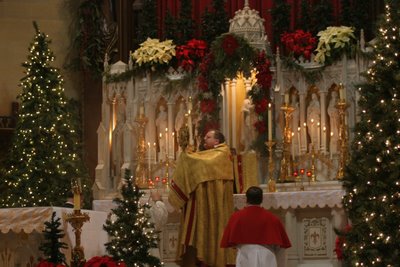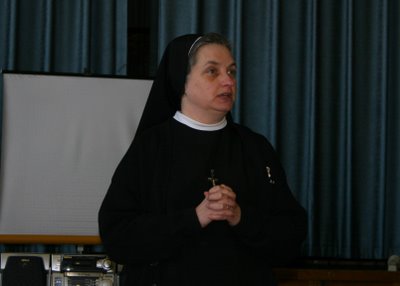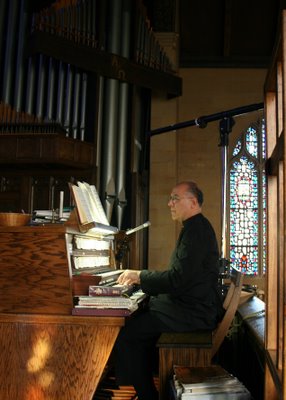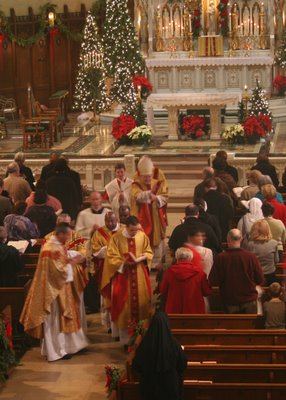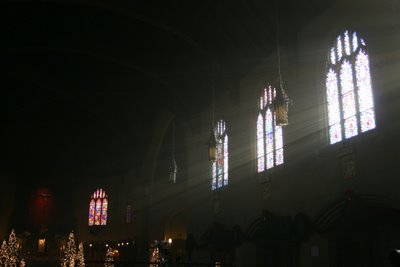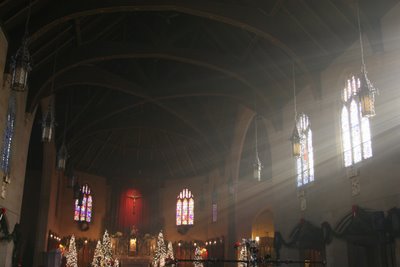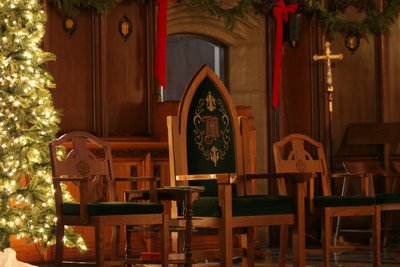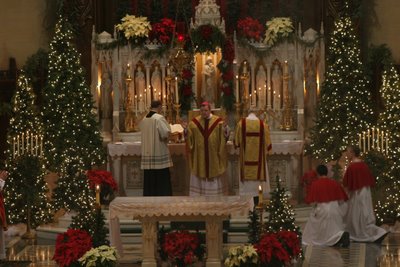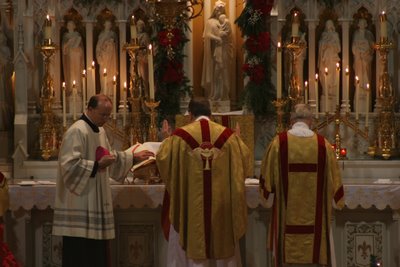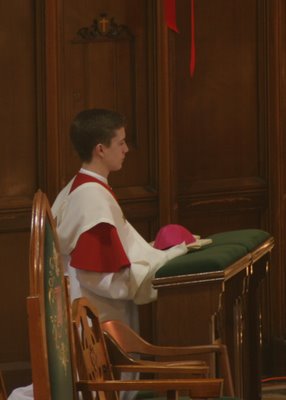 A photo taken of the Word of God around 10:50 PM, December 31, 2006
A photo taken of the Word of God around 10:50 PM, December 31, 2006
I must break temporarily from the photos of Archbishop Burke's visit in order to post a few photos from the vigil Mass for the Solemnity of Mary - Mother of God. This vigil Mass is a tradition at Assumption Grotto which takes place at 11:00pm, followed by Exposition with Rosary just after Midnight. This included the chanting of the Te Deum and Veni Creator Spiritus, as well as, the O Salutaris and Tantum Ergo so well known at Assumption Grotto with daily adoration and benediction opportunties, as well as each Sunday following the noon Mass. I would estimate 150 - give or take 30, in attendance. Not bad considering how many had gone to regular Sunday Mass, knowing they would return later that evening. Since it fell on a Monday the Mass was not obligatory. With the exception of the Monday night 7:00pm Mass (which was canceled), the usual holy day Mass schedule was followed: 6:30am, 9:30am, and noon.
When Father Perrone has an unprepared sermon, he speaks with his eyes closed. While his sermons are always good, those which are unprepared are often very profound. He probably has his eyes closed through more of the Mass, than he has them opened. This caused me to stir when I first came to Assumption Grotto, and to consider where I should be at all times in the Mass - spiritually opening myself to the contemplative dimension, should the Lord so grant it. That is what makes the Mass at Grotto so special - it is devoid of the kind of stimulii that would pull one from the meditative quiet so conducive to this contemplative dimension.
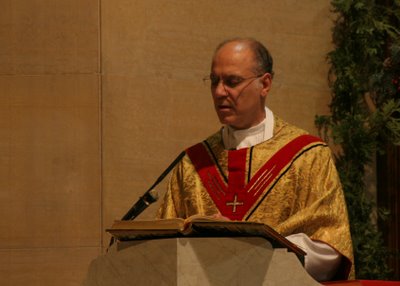

As the world brought in the New Year with bubbly, we were bringing it in to the sound of urban gunfire as we received the Body and Blood of Christ. The post midnight Rosary - giving the first moments of the New Year to Mary during Eucharistic Exposition, was a most fitting way to begin, as well.

One last shot of the Word of God, taken prior to Mass.

After the Mass, the majority of those in attendance went to a pot-luck meal in the parish hall around 12:30am. It was beautifully decorated for the occassion, but I did not have the right lens on my camera to get a broad shot of it all. But, I can share a few that I did get.
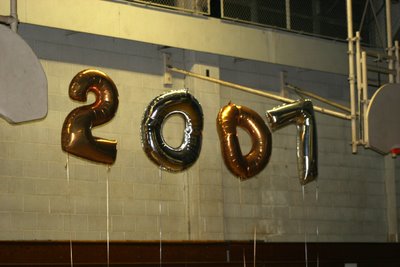

Someone brought a few cans of silly string. While people went around spraying each other with the stuff, everyone wondered if there was a soul brave enough to.......
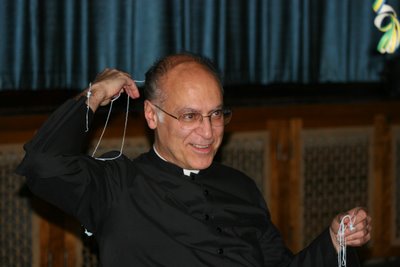


Rumor has it that there is a parishioner looking for a new parish......
Fortunately for the parishioner, our pastor and his associate were good sports, considering that while the rest of us could sleep away the morning, they would only get a nap before getting up early and doing the remaining Masses for this feast day.
While we celebrated the New Year, we opted not to pop open the champagne until after we had honored the Mother of God on this special day.
Posting of Archbishop Raymond L. Burke's visit to Assumption Grotto will resume tomorrow, as I drink my first cup of coffee in the early morning hours.
A Te Deum FAQ: Why do you make blog posts daily?
Whenever there is a significant liturgical event at Assumption Grotto, I often have far more photos than I can provide in a single post. Rather than continue posting about an event weeks or months after it has ended, I would rather keep them close together so that one may scroll through a given month in the future. While I continue to post them, there is no need to come daily. Rather, feel free to check in once or twice weekly and simply scroll.
After making many photo posts, I will likely go back to making posts a few times weekly. I read other blogs, and make almost all of my posts early in the morning before I head off to morning Mass prior to work. It helps me to wake up!!!
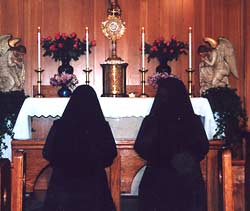


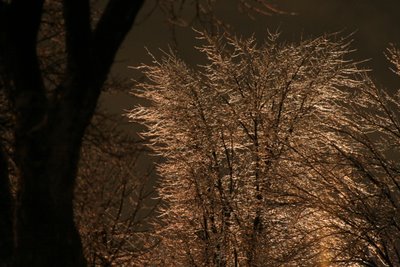
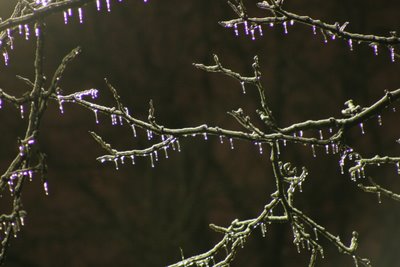
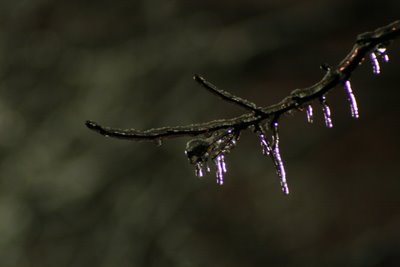
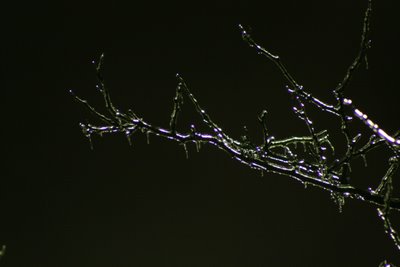

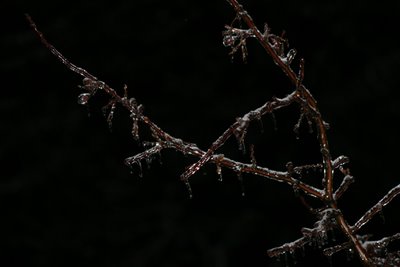
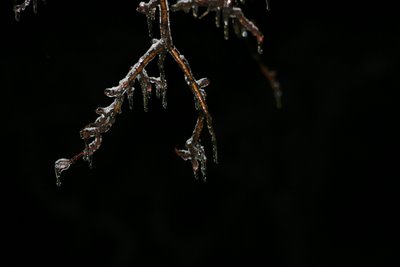
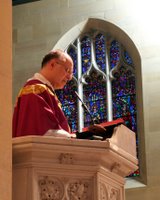


 Michael Voris
Michael Voris